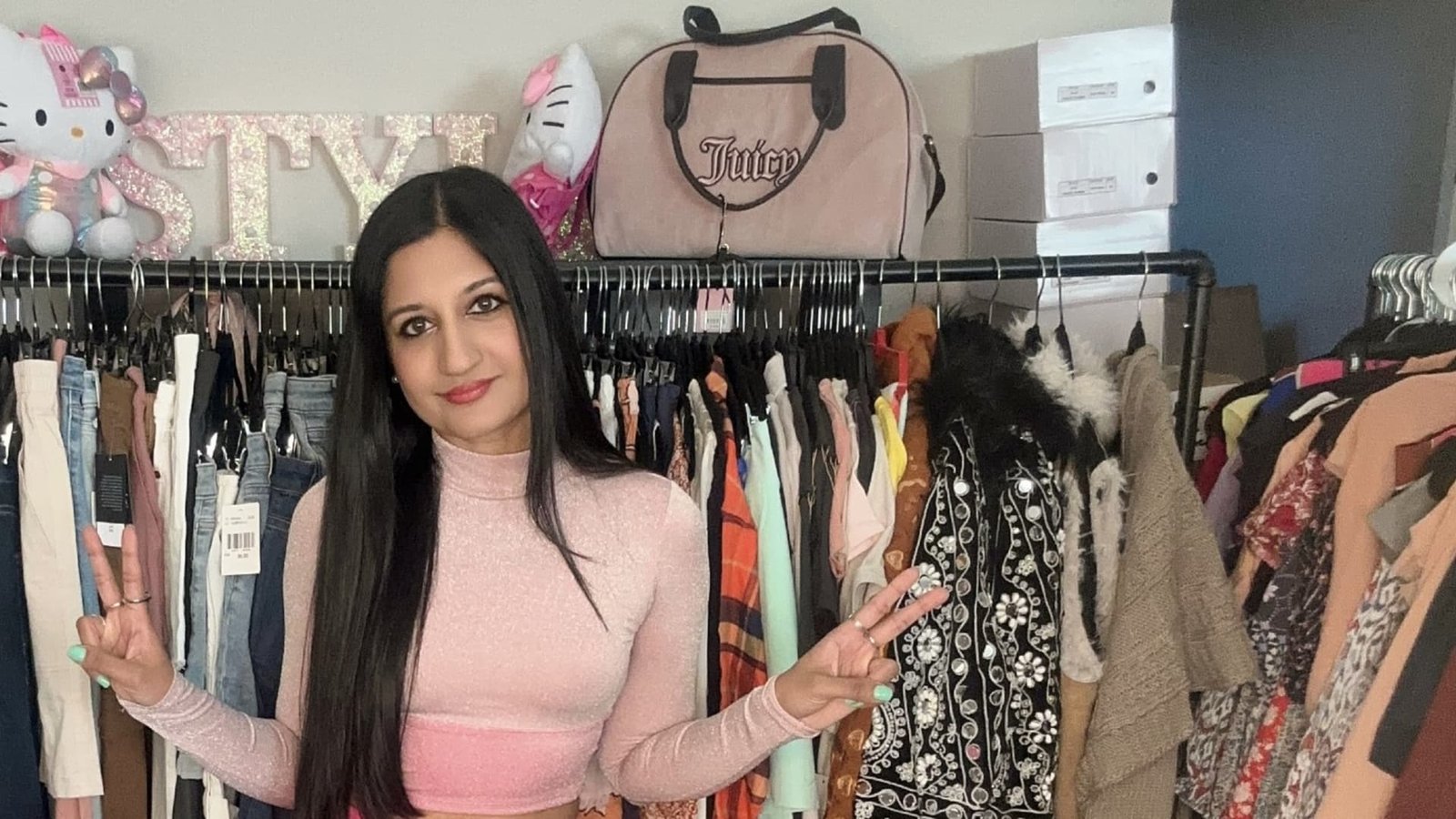Zoreen Kabani always assumed she would go into a traditional professional field.
The 37-year-old’s family immigrated from Pakistan to California when she was 14, and those were the roads she knew. In Pakistan, the cultural expectation is “either you’re in finance or you’re an engineer or you’re a doctor,” she says.
And for the first decade or so of her working life, she followed one of those paths. Kabani studied finance during both her bachelor’s and master’s degrees and was first hired at Goldman Sachs in 2010 and then at JPMorgan Chase in 2013. “But I never felt fulfilled,” she says.
In April 2022, “I decided to quit my job” at JPMorgan, she says, and find work that fed her soul. Specifically, she wanted to do something creative. A few months later, her younger brother introduced her to the auction app Whatnot, where sellers live-stream auctions of new and used items ranging from electronics to baseball cards.
Kabani found her way into the women’s fashion section and “became obsessed,” she says. Within a month, she thought, “I can do this.”
Kabani, who is now based in Las Vegas, has since both delved into auctioning on Whatnot through his site, zkstyles, and taken his hustle full time. She often brings in more than $100,000 a month. Here’s how she built her online business.
‘I love finding deals’
In June 2022, when Kabani decided to dive into sales, she knew she wanted to focus on women’s fashion. “It was a passion for me personally,” she says.
Partly this is because she has always loved shopping. As a child of immigrants, “I grew up very frugal,” she says, adding that “I love finding bargains.” After planning her first stream, she used that skill to find about 50 items that could be sold at thrift stores and sales, she says.
“I probably had some vintage T-shirts in there,” she says. “Some cute women’s fashion items like a Nike hoodie.” Kabani has a darker, goth aesthetic, she says, “so I had grungy stuff in there as well.” She remembers about 50 people tuning in and 20 to 30 people ultimately buying merchandise.
“Having been in sales for about 13 years,” she says, “it was a very natural progression for me to get in front of a camera and talk about a product.” The difference was that instead of selling stocks, bonds and investments, she sold cute shirts and pants.
“And I absolutely loved it.”
Most sellers stream ‘twice a week at most’
After booking a few more streams, Kabani started to see the money come in. “My whole goal was not to dip into my savings,” she says, “and I was able to do that with my Whatnot streams.” Within a few months, she decided to take her hustle full-time.
Some of Kabani’s shipments.
Courtesy Zoreen Kabani
She made sure that a few elements of her business stood out on the platform. First, Kabani built a Monday-to-Friday stream schedule, not unlike the schedule she was used to in corporate America. When it came to other sellers, “most people were streaming twice a week at most,” she says.
Second, while many fashion streamers liked to simply show off the items they were selling, Kabani offered styling tips. For example, if she showed a black Macy’s sweater, she’d say, “you could pair it with a pair of jeans and do some Dr. Martens and it would look really cute,” she says.
In her first month alone, she earned more than $12,000.
‘I have so much fun playing with clothes’
To date, Kabani has sold more than 75,000 items on the site, according to her profile.
These days, she keeps to a rigorous six-day-a-week streaming schedule, which usually begins around 19 Pacific Time. Flows last anywhere from two to seven hours, depending on inventory and her own energy levels. “I have clients who tune in at the same time every single night for me,” she says. She uses her iPhone to record herself.
After scaling her business so that “sometimes we ship 2,000 units a week,” she says, she has had to upgrade her sourcing. She now uses sites like Boutique by the Box, where sellers can buy boxes of designer clothes from companies like Madewell and Aerie. She also works directly with suppliers who tell her about fire clearances.
Costs associated with operating the business include inventory, shipping, and shipping materials. They may vary because the types of clothes she sells also vary. “I can have inventory where my average item price is $5,” she says. “But I can have inventory where my average item price is $25.” Whatnot fees can add up to around 11% of the item’s selling price.
Still, business is going pretty well. In October 2023, she brought in more than $100,000 for the first time. In 2024 alone, she has brought in more than $900,000. Kabani prefers not to share her take-home pay, but says she transfers money to her personal account as needed and reinvests most of her earnings into the business.
“I probably have 15-hour days,” she says of the grueling schedule. But she loves what she does.
“It’s my business and I have so much fun playing with clothes.”
Want to stop worrying about money? Sign up for CNBC’s new online course Achieve Financial Well-Being: Be Happier, Wealthier, and More Financially Secure. We teach you the psychology of money, how to manage stress and create healthy habits and simple ways to increase your savings, get out of debt and invest in the future. Get started today and use code EARLYBIRD for an introductory 30% discount through September 2, 2024.
Plus, sign up CNBC Make It’s newsletter to get tips and tricks for success at work, with money and in life.
